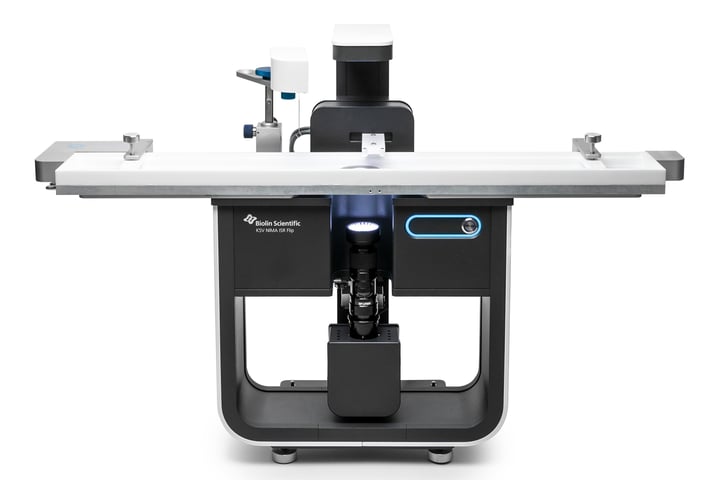
Interfacial rheology studies the response of the interfacial layer to the external stimuli at air-liquid or liquid-liquid interfaces. Interfacial layers are typically composed of amphiphilic molecules with hydrophilic and hydrophobic moieties. When placed at the interface the molecules will orient themselves so that the hydrophilic part is in water and the hydrophobic part in the air (or oil if at the liquid-liquid interface). As molecules adsorb at the interface, they decrease the surface tension but in addition, the interfacial layer works as a barrier that prevents the breakage of the interface. To study the strength of the interfacial layer, different interfacial rheology techniques are used. The techniques can be divided into dilatational and shear methods.
Dilatation methods change the surface area of the interface. As the size of the surface area oscillates, the molecules at the interface move further away or towards each other. This will change the surface tension at the interface accordingly. One common way to measure dilatation interfacial rheology is with oscillating drop. In this method, the volume of the droplet hanging at the end of the needle tip will oscillate with controlled frequency. If we would assume that the surfactants studied are soluble in the bulk phase, this would lead to an exchange of matter between the bulk and the interface when the oscillation frequency is similar to the time of the adsorption/desorption process.
In a shear method, the shape of the surface is deformed. This can be done with different methods, but the most sensitive method utilizes a magnetic needle placed at the interface. The needle oscillates with the help of a magnetic trap, and the motion of the needle is recorded with a high-resolution camera. With shear methods, there should be no exchange between the bulk of the fluid and the interface as there is no area change.
If you would like to learn more about interfacial rheology and how it can be measured, please sign up for the webinar through the link below.
Emulsions are dispersed systems of two immiscible liquids such as oil and water. Interfacial rheology measurements predict emulsion and foam stability.
The same measurement modes used in bulk rheology are also meaningful in interfacial rheology.
Pickering emulsions utilize solid particles to stabilize the interface between the two immiscible liquids
International Congress on Interfacial Rheology was held in Athens from the 29th of July to the 4th of August 2023.
Foam stability refers to the ability of a foam to maintain its structure and resist collapse over time.
In this blog post, the most common interfacial shear rheology methods are reviewed.
Interfacial shear rheology at the gas-liquid or liquid-liquid interface is relevant in a wide range of applications where foams and emulsions are used.
Interfacial rheology is a special branch of rheology that involves studying the unique two-dimensional systems formed at interfaces.
